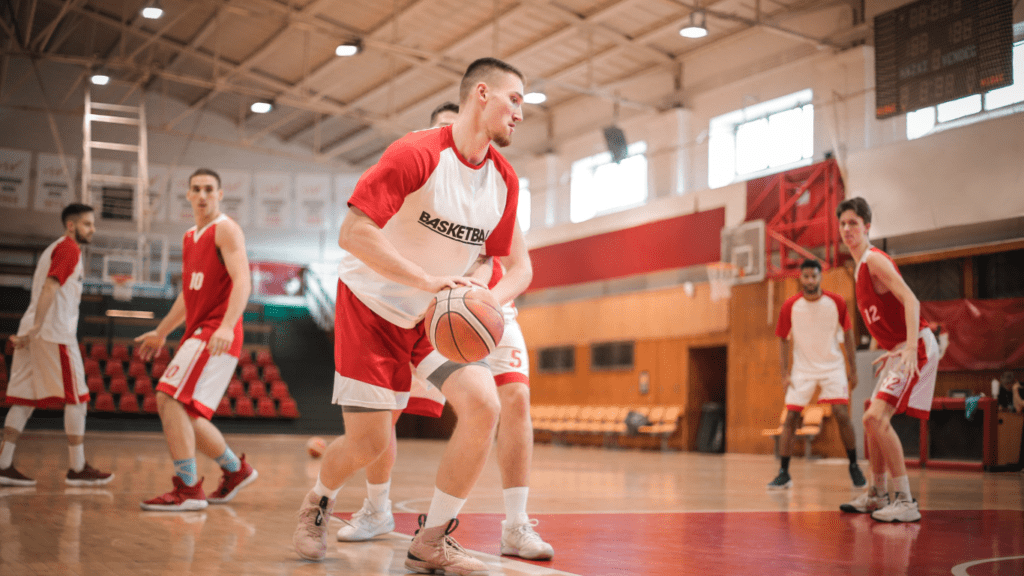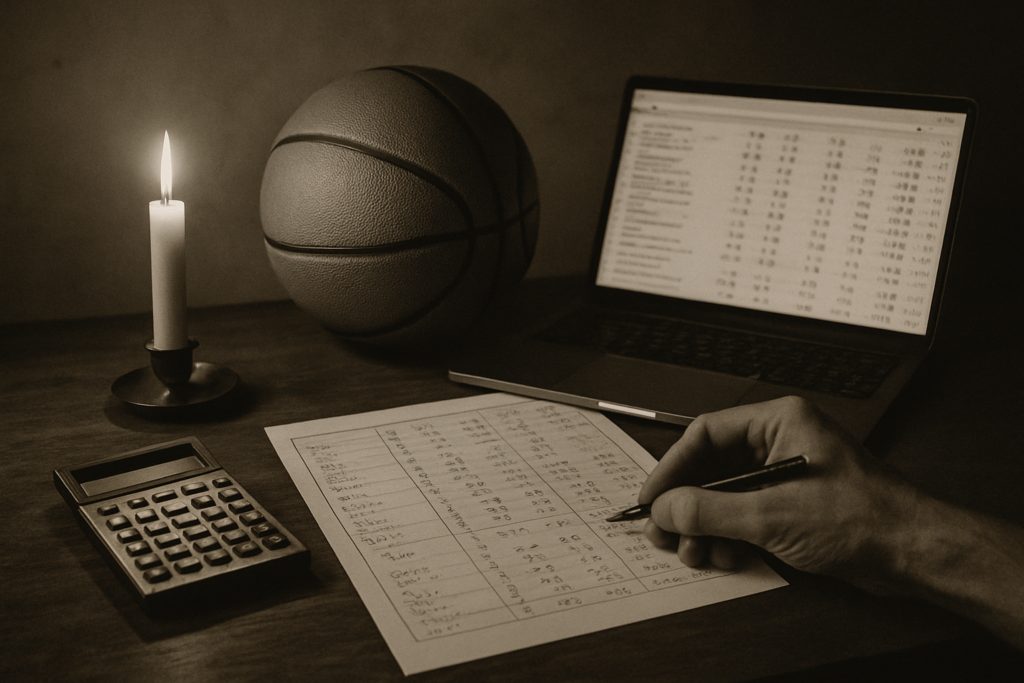Understanding Basketball Betting Odds
Basketball betting odds can fluctuate dramatically, especially after player trades. These odds guide bettors in making informed decisions and require understanding their calculation and influencing factors.
How Odds Are Calculated
Bookmakers set odds to balance bets and ensure profit. They analyze various data points, including;
- team performance
- player statistics
- historical matches
Probability of outcomes, betting patterns, and public perception also play roles in determining odds.
The Role of Player Performance and Statistics
Player performance significantly impacts betting odds.
Key metrics like points per game, shooting percentages, and assists are crucial. When a player is traded, their stats help assess the new team’s potential performance.
Analysts adjust odds based on how a traded player’s performance might integrate into the new team dynamics.
The Impact of Player Trades on Basketball Betting Odds
Player trades in basketball significantly influence betting odds. These trades can cause immediate shifts and lead to long-term changes in betting patterns.
Immediate Effects on Odds
Player trades cause immediate fluctuations in betting odds by altering team dynamics. Bookmakers rapidly adjust odds to reflect the perceived strength of the new team roster.
For instance, if a star player joins a team, bookmakers might shorten the odds for that team, indicating higher chances of winning.
Bettors must stay updated on these trades to leverage quickly changing odds.
An example of an impactful trade is when a high-scoring guard moves to a new team, potentially increasing that team’s odds of winning upcoming games.
Conversely, if a key player leaves, bookmakers might lengthen the odds, suggesting reduced chances of success.
Long-Term Changes in Betting Patterns
Over time, player trades can reshape betting patterns. Consistent changes in team performance due to new player integration can affect future odds and betting behaviors.
For example, a team acquiring a defensive specialist could start a trend where bettors favor low-scoring game predictions. Observing how these trades impact team cohesion and performance metrics helps bettors make informed decisions.
Moreover, historical data post-trade reveal patterns—such as win/loss ratios or scoring averages—that inform future betting strategies. Bettors keen on trends ensure they analyze performance data to adapt to evolving odds influenced by these trades.
Analyzing Major Trades in Recent Basketball History

Major trades in basketball history have notably influenced betting odds. Examining these trades helps highlight their impacts on odds and team performances.
Case Studies of Notable Player Trades
- LeBron James to the Lakers (2018): LeBron’s move to the Lakers drastically affected betting odds. The Lakers’ Championship odds improved from +2000 to +650. This trade sparked a flurry of betting activity and shifted public perception of the team’s immediate potential.
- Kevin Durant to the Warriors (2016): Durant joining the Warriors had a profound impact on Championship odds, shortening from +250 to -150. The team’s performance dominance created a long-term betting pattern favoring the Warriors in most matchups.
- Kawhi Leonard to the Raptors (2018): This trade significantly altered the Raptors’ odds, evolving from +2000 to +900. Leonard’s influence led to the Raptors winning their first-ever NBA Championship, showcasing how player trades can lead to unprecedented success.
- James Harden to the Nets (2021): Harden’s trade increased the Nets’ odds of winning the Championship, moving from +600 to +250. The creation of a powerful trio with Durant and Irving reinvigorated the team’s competitive profile, heavily impacting betting lines.
- Player Efficiency Ratings (PER): PER evaluates a player’s overall efficiency during games. High PER scores of incoming players tighten odds for their new teams, as bookmakers anticipate enhanced team performance.
- Plus-Minus Statistics: This stat measures the point differential when a specific player is on the court. Significant positive plus-minus stats from traded players contribute to odds adjustments, reflecting expected positive influence.
- Injury Reports: Real-time injury data affects betting odds immediately. If traded players have a history of injuries, bookmakers might lengthen odds to account for potential downtimes and missed games.
- Historical Performance Data: Bookmakers analyze players’ past performances with previous teams, leveraging this data to set odds. Star players with consistent high performance typically shorten odds for their new teams.
- Team Chemistry Metrics: These tools quantify how well players work together. Trades impacting team chemistry are closely monitored, as positive metrics can lead to odds tightening, while negative affects might cause lengthening.
These case studies and tools illustrate how trades shape betting odds and offer bettors insights to make informed wagers.
Strategies for Bettors After Major Player Trades
Bettors must adapt their approaches instantly after major player trades. Changes in team dynamics require swift adjustments to betting strategies and risk management techniques.
Adjusting Betting Strategies
Player trades often disrupt team chemistry and performance. Bettors should track how new players integrate into their teams.
Focus on metrics like Player Efficiency Ratings and Plus-Minus statistics to gauge individual contributions.
Monitoring these indicators helps bettors understand immediate and long-term impacts on gameplay.
When star players transfer, betting markets might overreact.
Exploit these opportunities by identifying undervalued teams or players. Analyze recent performance trends and historical data to predict potential undervaluations.
Risk Management Techniques
After a major trade, risk levels increase due to uncertainties about team performance.
Diversify bets to spread risk across multiple games and markets. Use smaller bet sizes initially while assessing the trade’s impact on the team.
Regularly update your data inputs. This includes real-time injury reports and team chemistry metrics, which can swiftly alter odds. Adjust bet sizes based on confidence levels derived from the latest data.
Employing these techniques minimizes potential losses while maximizing profitable opportunities.


 Charlessen Hitchcockiee is the visionary founder behind Play Daily Win Big, a leading platform dedicated to delivering the latest in betting and gaming news. With a deep-rooted passion for the gaming industry, Charlessen has built a reputation for providing insightful analysis and valuable updates that cater to both casual players and industry experts. His extensive knowledge spans market trends, regulatory changes, and strategic gaming tips, making Play Daily Win Big a trusted resource for its audience.
Charlessen Hitchcockiee is the visionary founder behind Play Daily Win Big, a leading platform dedicated to delivering the latest in betting and gaming news. With a deep-rooted passion for the gaming industry, Charlessen has built a reputation for providing insightful analysis and valuable updates that cater to both casual players and industry experts. His extensive knowledge spans market trends, regulatory changes, and strategic gaming tips, making Play Daily Win Big a trusted resource for its audience.
